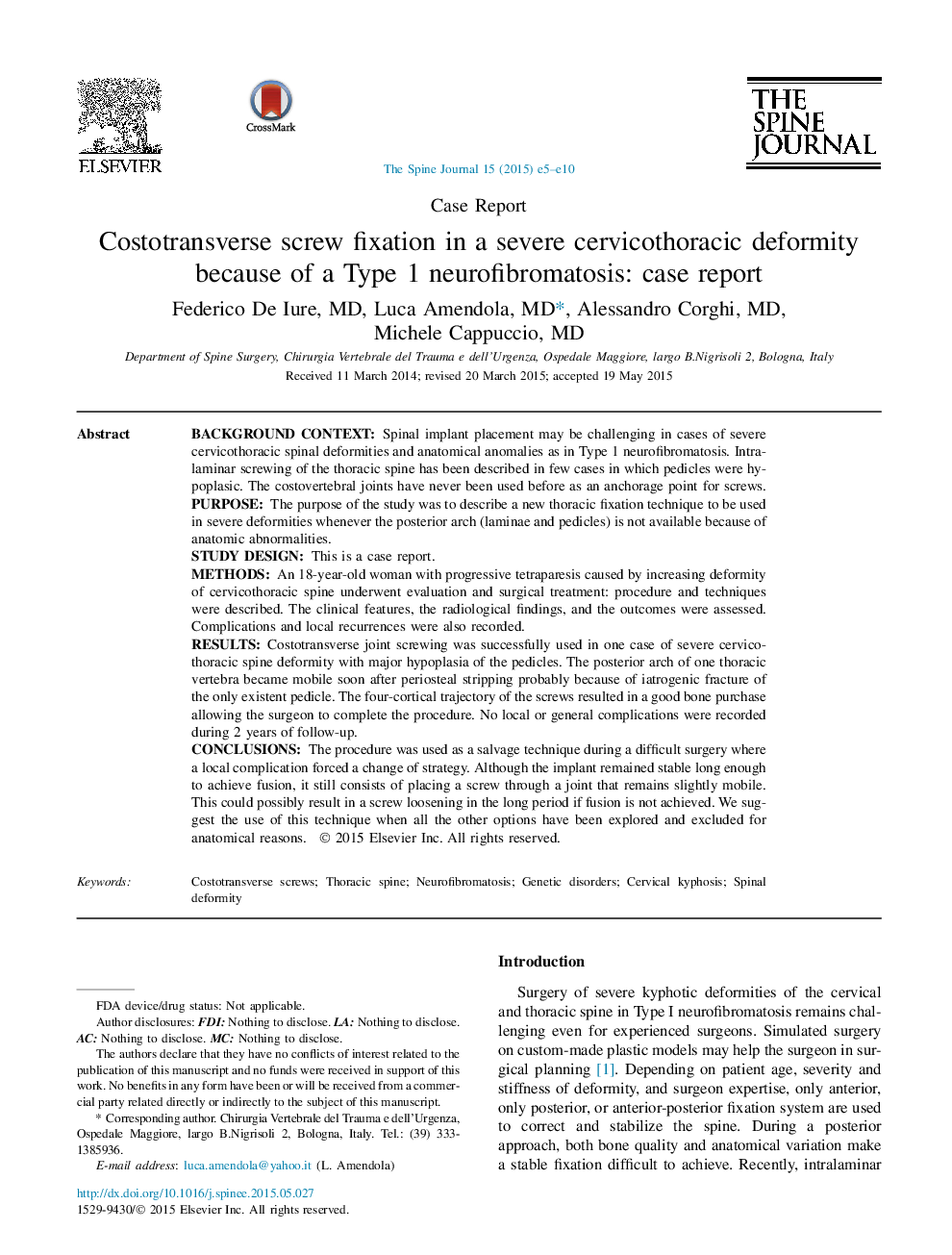| Article ID | Journal | Published Year | Pages | File Type |
|---|---|---|---|---|
| 6212519 | The Spine Journal | 2015 | 6 Pages |
Background contextSpinal implant placement may be challenging in cases of severe cervicothoracic spinal deformities and anatomical anomalies as in Type 1 neurofibromatosis. Intralaminar screwing of the thoracic spine has been described in few cases in which pedicles were hypoplasic. The costovertebral joints have never been used before as an anchorage point for screws.PurposeThe purpose of the study was to describe a new thoracic fixation technique to be used in severe deformities whenever the posterior arch (laminae and pedicles) is not available because of anatomic abnormalities.Study designThis is a case report.MethodsAn 18-year-old woman with progressive tetraparesis caused by increasing deformity of cervicothoracic spine underwent evaluation and surgical treatment: procedure and techniques were described. The clinical features, the radiological findings, and the outcomes were assessed. Complications and local recurrences were also recorded.ResultsCostotransverse joint screwing was successfully used in one case of severe cervicothoracic spine deformity with major hypoplasia of the pedicles. The posterior arch of one thoracic vertebra became mobile soon after periosteal stripping probably because of iatrogenic fracture of the only existent pedicle. The four-cortical trajectory of the screws resulted in a good bone purchase allowing the surgeon to complete the procedure. No local or general complications were recorded during 2 years of follow-up.ConclusionsThe procedure was used as a salvage technique during a difficult surgery where a local complication forced a change of strategy. Although the implant remained stable long enough to achieve fusion, it still consists of placing a screw through a joint that remains slightly mobile. This could possibly result in a screw loosening in the long period if fusion is not achieved. We suggest the use of this technique when all the other options have been explored and excluded for anatomical reasons.
